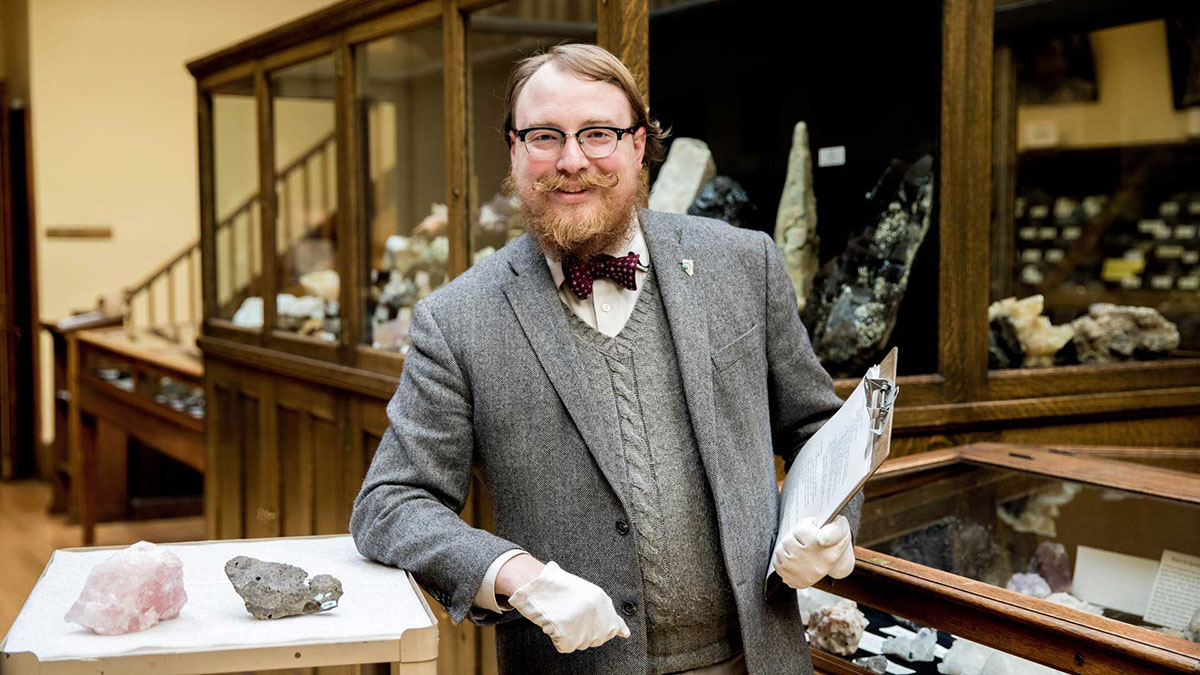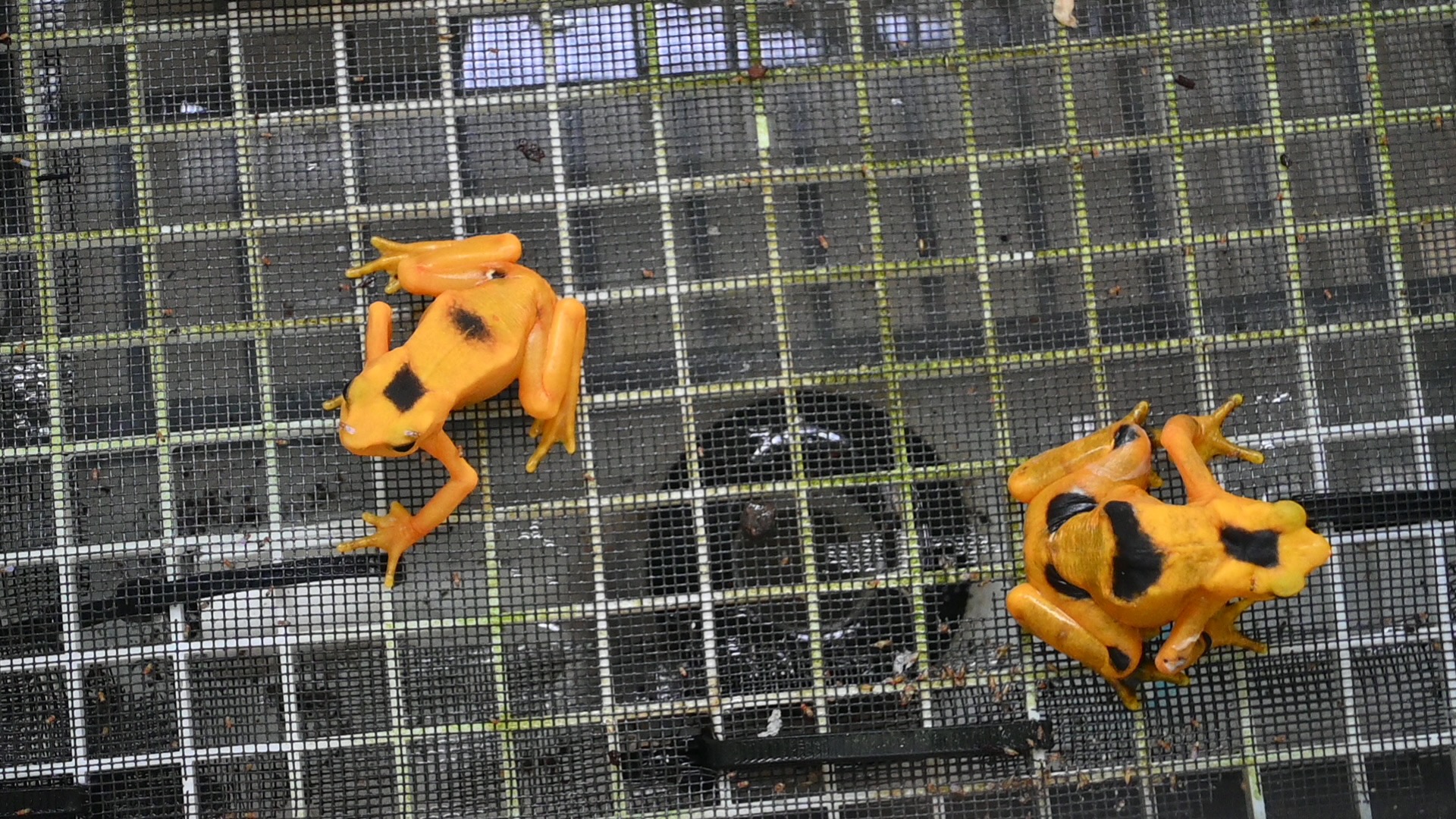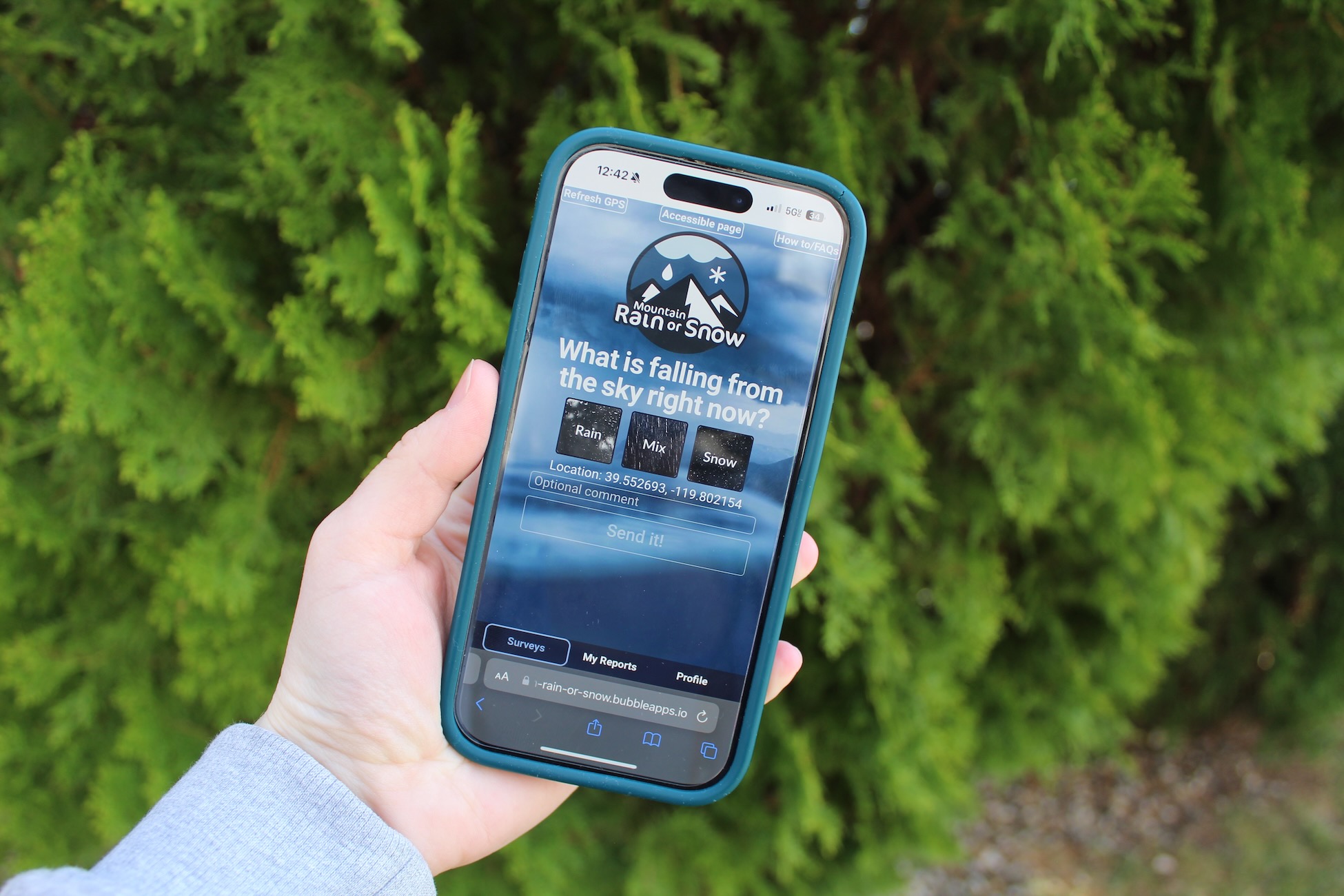Garrett Barmore, M.A., is the Mackay School of Mines Endowed Curator at the University of Nevada, Reno’s W. M. Keck Earth Science and Mineral Engineering Museum. Hitchcock Project science reporter Amanda Durand recently spoke with Barmore to learn about the museum’s rock collections, the unexpected impact of climate change on museum work, and more.
Q: What do you study here at the Museum?
A: So the museum itself, we have three collecting areas, which are rocks and minerals, paleontology, and mining history. Our focus is on Nevada, but our collection spans the globe. Historically, the collection itself is over 150 years old, so there is a much larger encyclopedic approach. In recent years, because we’re running out of room, we’ve narrowed that focus to what we’re really good at, which is interpreting Nevada and sciences.
Q: Due to Nevada’s history with mining, I assume a lot of the stuff at the W. M. Keck Earth Science and Mineral Engineering Museum is largely focused on Nevada’s mining history, correct?
A: The exception to our Nevada rule is active research happening here at the Mackay School, which of course includes the mining program, metallurgy, geology, and geography. Our collection is really focused on ores and ore specimens, mostly related to mining, but we also have a large paleontology collection. We do send objects all over the country and in some cases other countries, especially Canada, for research. So, while we do have an active K-12 program here, we do really support active research throughout the academic community.
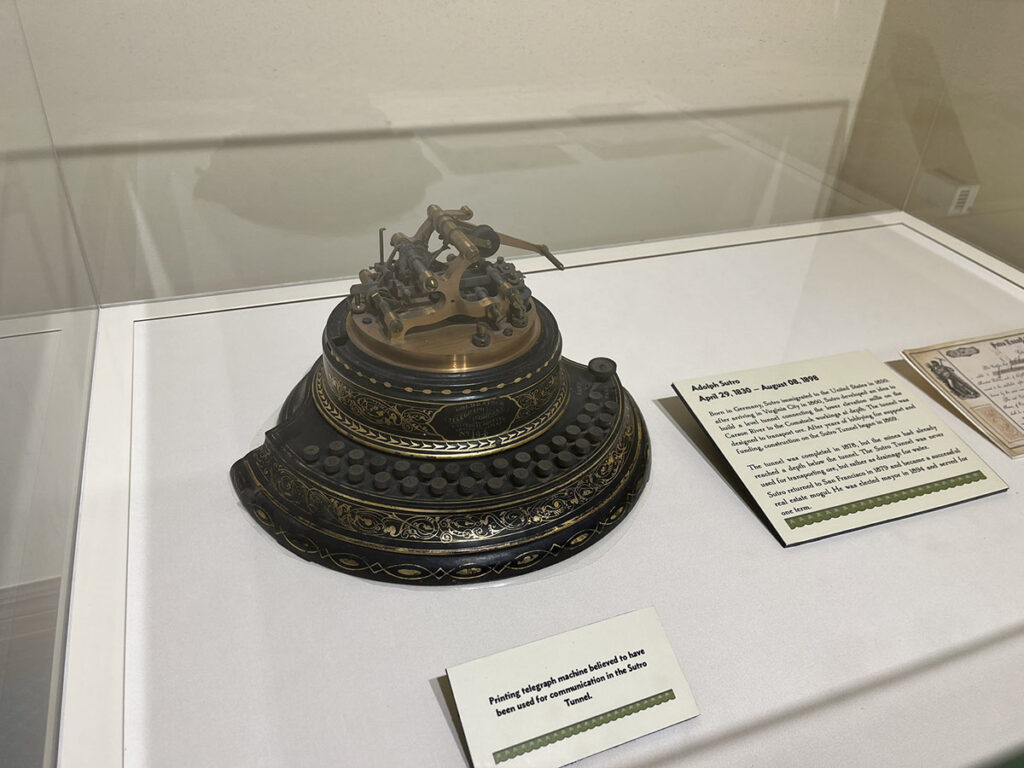
Q: Do you have a personal favorite collection at the museum?
A: That’s a huge question, and I have so many favorites in the collection. It really depends on how I’m feeling and the day of the week. We probably have the largest and most complete collection of Comstock ores, so ores from Virginia City, mostly from about 1859 into the 1920s, though it’s really kinda focused from ‘59-‘86. Then of course there’s the Mackay Silver Collection. We do have a nice collection of helicoprion fossils. Helicoprion was an ancient shark-type animal that lived over 290 million years ago. It had a really unique tooth-whorl jaw structure. It’s very unusual.
Q: That sounds quite unique. Now, this question might not relate at all to what you do, but has climate change in any way impacted your work at the museum?
A: Climate change definitely impacts our work because the story of ancient Earth and the story of geology, or paleontology specifically, is the story of climate change. The Permian Extinction 250 million years ago because of gasses released from the boom of life changed the pH by just a couple of percentages in the Earth and the Earth’s ocean and this caused 90% of life in the oceans to go extinct. It was a cascading effect. But even beyond telling the story of climate change, there’s a reason why there are no longer wooly mammoths or mastodons in Nevada. 50 thousand years ago our planet was very different.
Also politically, there can be a major impact on museums and museum work. For example, between 2016 and 2020, during the Trump Presidency, federal museums weren’t allowed to discuss climate change and use the term. So, climate change, which in my opinion is a very scientific issue, is also very politicized and there is a concern that people will disagree with how we interpret climate change. Depending on the administration, it can affect funding, it can affect mission and so museums are really tied to climate change in many ways.
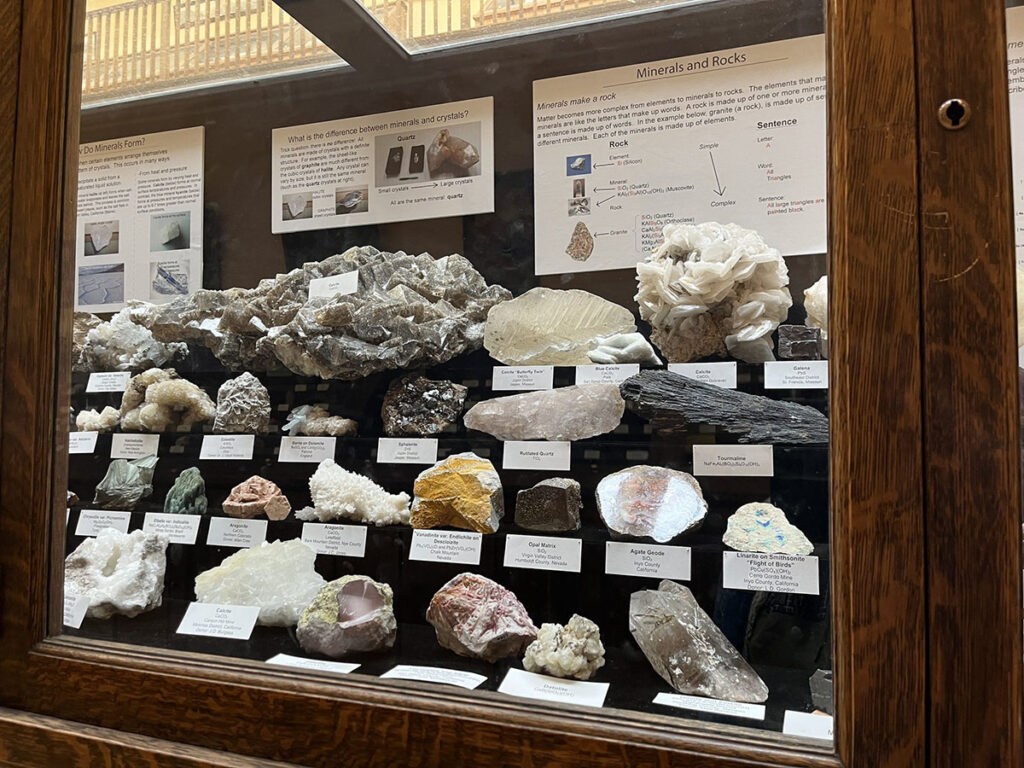
Q: Why did you choose to study geology?
A: Well, my background actually is not in geology. All my degrees are in the Liberal Arts. My Master’s degree is in Museology, which is how to run and operate a museum, and I received that from the University of Washington. What really drew me to museums was the storytelling. I worked as an archeologist here in Nevada real quick, and focusing on the objects is cool and whatnot, but for me the next step, really the interest, is sharing those objects, telling a story about those objects, and that is really where you move into the realm of museum work.
In regards to Earth science and mining museums, I just kind of fell into that by mistake. I wrote my thesis on a tiny little historical site in Ferry County, Washington. That was the other gold rush of 1896, not the Alaskan Gold Rush, it was the Ferry County Gold Rush. I ended up back here in Nevada, of course, working for the Mackay School and the Mining Museum, and with my work as an archaeologist, where I worked in historic mines, it kind of all just came together.
More information
The W. M. Keck Earth Science and Mineral Engineering Museum is located in the Mackay School of Mines building at the University of Nevada, Reno. The museum, which opened in 1908, is home to collections of minerals, ore, fossil specimens, photographs, mining relics, and the Mackay Silver Collection. It is open to the public M-F, 9am – 4pm, and the first Saturday of the month from 12pm-4pm.
For more information about the museum, please visit:
https://www.unr.edu/mackay/about/keck-museum
Amanda Durand is a journalism major and digital media minor in the Reynolds School of Journalism. She completed this story for the Hitchcock Project’s science reporting class during spring 2024.

